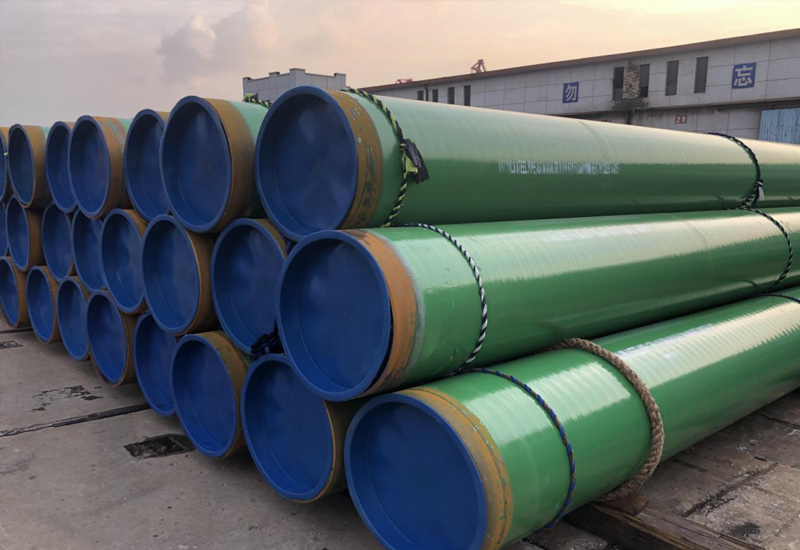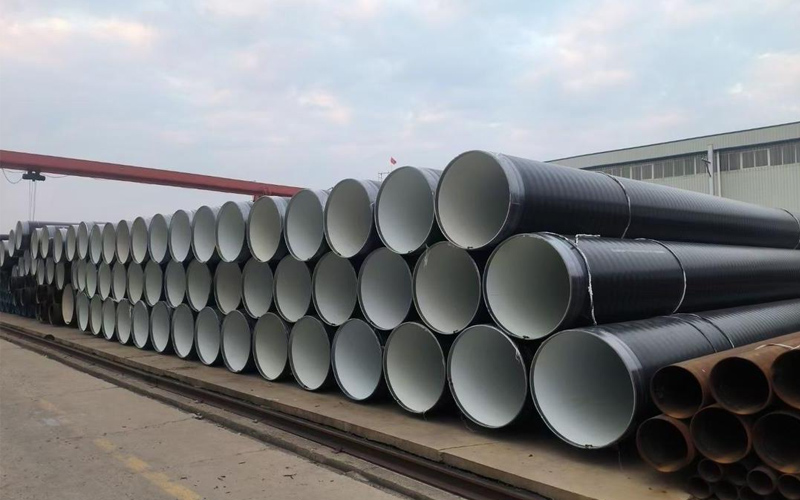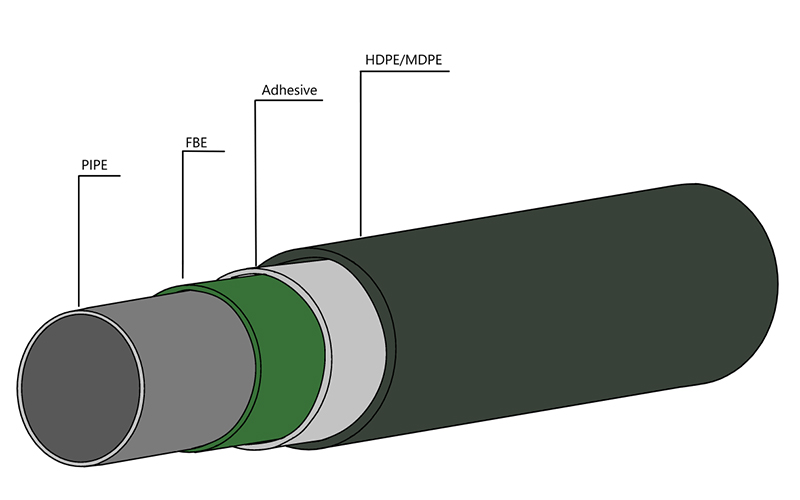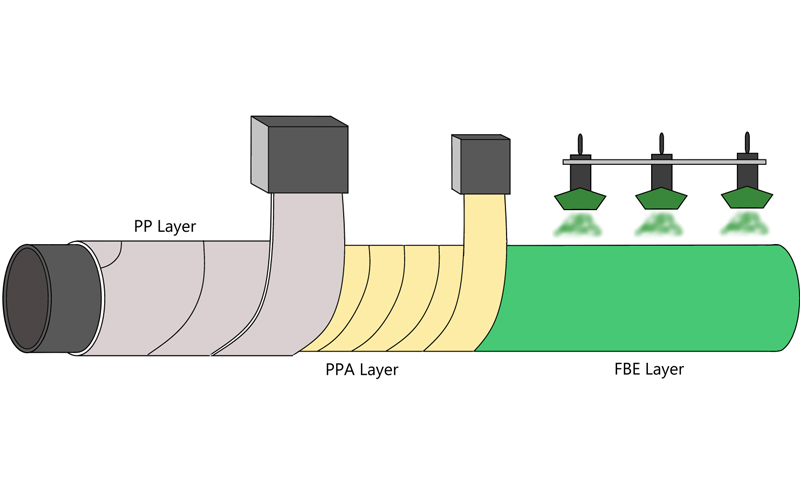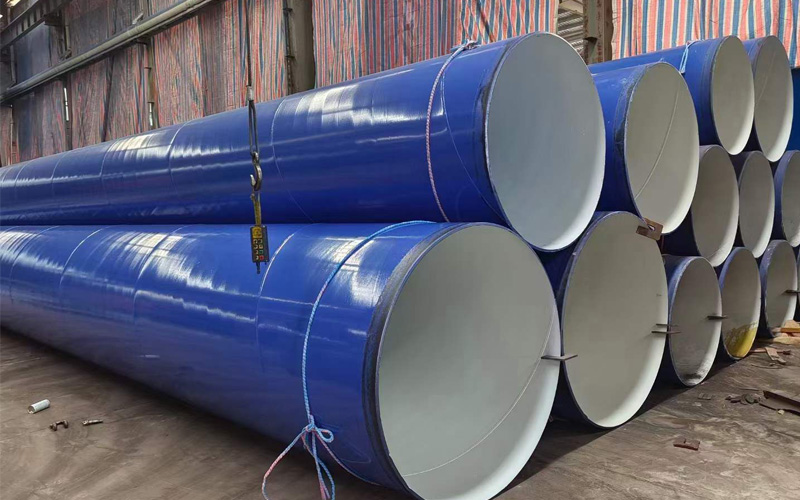The Hydrostatic Test: Why It’s the Final Defense for API 5L Pipe Integrity
Introduction
The steel pipes made for high-pressure pipelines need to last for a long time. The steel pipe starts as a plate. It is then shaped, welded, and formed with cutting-edge engineering. Also, the steel pipe goes through different inspections and non-destructive tests, and these are done with the help of advanced X-ray and ultrasonic scanners. With these tests, it is highly unlikely for the steel pipe to contain any defects. Despite going through these methods, the main question remains unanswered: How do we know the steel pipe can contain high levels of pressure for a long period? This is proven by the final test conducted before its certification: the hydrostatic test. The following article will explain this process, and why it is the steel pipe’s strongest proof.
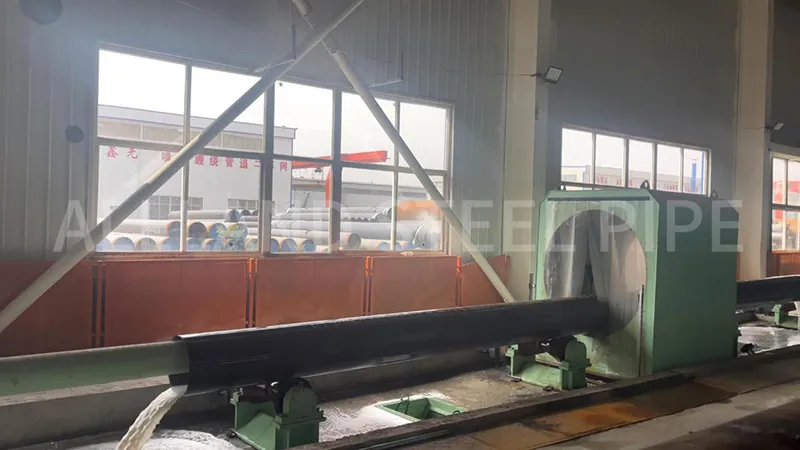
What is a Hydrostatic Test?
A hydrostatic test is commonly known as a hydrotest. It is used to test vessels and pipelines for leaks and strength. The concept of the test is a straightforward, yet robust proof test that puts the pipe under the pressure that far exceeds its specified pressure. In other words, in essence, heavy duty end caps are fitted to both sides of the pipe, the pipe is fully filled with a liquid medium ( usually water with corrosion inhibitor); air fully bled. And hydrostatic pump is used to pressure the water inside the pipe to a predetermined pressure required by the specification (for instance API 5L). This pressure is held for a specified period of time while the inspector keenly observes the pressure gauges for any pressure drop and also visually inspects the complete body of the pipe and its weld seams for any leak or permanent deformation. It is an ultimate integrity test that is very Straightforward,physical.
The Core Purpose: Simulating the Extreme to Ensure Absolute Safety
The hydrostatic test is not a mere formality; it serves three critical purposes, each directly linked to the ultimate safety and reliability of the pipeline.
To Check the Weld and Pipe Body Strength: NDT methods are good at “locating” potential flaws, but the hydrostatic test is meant to “check” strength under pressure. It puts the pipe under stress like it would face in real life, but the stress is much higher. This huge force gives a clear answer if the weld and the pipe body can stay together without breaking. It is the final check that the pipe processed in the plant can take the pressure it was built to hold without breaking.
Reveal Hidden Microscopic Flaws: Some tiny flaws, like pinholes, micro-cracks, or porous metal, may be so small they can escape even the finest NDT equipment’s attention. Under the overwhelming force of the hydrotest, stress at the tip of these flaws is magnified thousands of times over. This can cause a tiny flaw to bloom into a weeping leak, or a detectable deformation. The test is designed to find the weakest link in the chain, and force it to fail in a safe and controlled environment, so that pipe will never see the field.
To Relieve Residual Stresses from Manufacturing: The processes is important because turning a steel plate into a cylinder and welding it both build up stresses inside the material. A hydrotest, where you increase the pipe’s pressure until the material yields a little (proof stressing), can help relieve and move around some of these built-up stresses (mechanical stress relief). This can sometimes make the pipe a bit tougher so that it is less likely to have fatigue and SCC problems during its service.
Key Parameters According to the API 5L Standard
As the globally recognized authority on line pipe, the API 5L standard provides strict and clear specifications for hydrostatic testing to ensure its scientific validity and reliability. Vague procedures are not allowed; every step is defined.
· Test Pressure: The test pressure is not an arbitrary number. It is calculated using a rigorous formula: P=(2St)/D.
· P = The minimum hydrostatic test pressure in psi.
· S = The specified minimum yield strength (SMYS) of the pipe material (e.g., 65,000 psi for Grade X65), multiplied by a factor based on the pipe grade.t = The specified wall thickness of the pipe in inches.
· D = The specified outside diameter of the pipe in inches. This calculation ensures that the pipe is tested to a level that creates a hoop stress equivalent to a high percentage (e.g., 85% or 95%) of its material’s yield strength.
· Hold Period: The pressure of test gas or vapor shall be held a sufficient time after the test pressure is reached to permit a thorough inspection. API 5L specifies the minimum dwell time ranging per size, grade or manufacturing process: normally 5 to 10s. The pressure gauge reading and the area surrounding each portion of the pipeline must not be less than a certain period of time: ventilation must be no visible leakage of the pipe device.
Why Hydrostatic Testing is Irreplaceable
In a modern factory, why do we still insist on this seemingly traditional test? Because NDT and hydrotesting are two complementary, indispensable quality control tools that answer different questions.
· NDT (X-ray, UT, MPI) asks: Are there any geometric flaws or discontinuities present? It is an inspection for imperfections.
· Hydrostatic Testing asks: Can this pipe, as a complete structure, safely hold the required pressure without leaking or bursting? It is an inspection for performance.
A pipe could theoretically have a small, acceptable flaw according to NDT standards but still fail a hydrotest if other factors (like material properties) are compromised. The hydrotest is the only procedure that validates the pipe’s primary function—to contain pressure—in a direct and physical way. It is the ultimate arbitration of quality.
Conclusion
The journey from a steel plate to a qualified line pipe is a long one, marked by dozens of manufacturing and inspection steps. The hydrostatic test is the final gatekeeper on that journey and the first step in our safety commitment to the client. It is the most realistic and demanding method to provide the final, irrefutable proof of each pipe’s pressure-bearing capacity. As a manufacturer that strictly adheres to API 5L and other international standards, we insist on performing a fully compliant hydrostatic test on every line pipe that leaves our facility,including all our LSAW and SSAW pipes. This ensures that what we deliver to your project site is not just a steel pipe, but a solid and reliable guarantee of safety and long-term performance.
If your project demands uncompromising quality and verified performance, contact us for a quote today. Our team is ready to provide you with a technical solution that meets the most stringent standards.
Get Your Custom Steel Pipe Quote Today!
Provide us with your project details (like application, specifications, quantity). Our experienced team will respond with a tailored solution and competitive quote within 24 business hours.
Related Articles
ASTM A53 vs. API 5L: A Guide to Selection and Application
Introduction:Technology differences determine success or failure, and selection needs to be “precise”
Steel Density Analysis: Core Differences between Mild and Medium Carbon Steels and Industrial Applications
3LPE coated steel pipe: a solid barrier in the field of industrial corrosion protection
3LPP coated pipe: anti-corrosion guard in high temperature and high pressure environment
FBE steel pipe: the technological armor of the steel defense line
HOT TAGS
latest posts
- 3LPP coated pipe: anti-corrosion guard in high temperature and high pressure environment
- ASTM A53 LSAW Steel Pipe Selection Guide for Oil and Gas Transportation Pipelines
- API 5L LSAW Pipe: A Deep Dive into PSL1 vs. PSL2
- Steel Pipe Sizing Errors? DN vs. OD Explained for Buyers
- NDT for Pipe Welds: X-ray vs. Ultrasonic Testing




